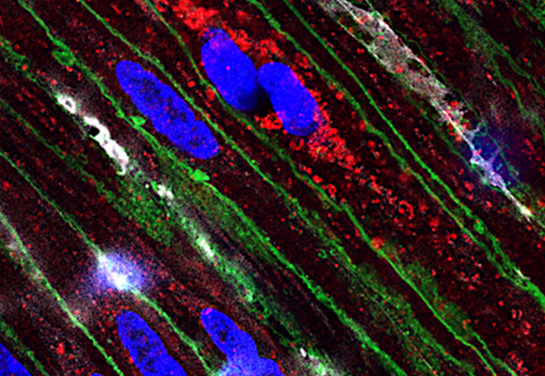Research suggests tie between hypertension and uterine fibroids
Study finds greater risk of fibroid diagnosis in midlife women with untreated high blood pressure
New research finds a link between high blood pressure and uterine fibroids in midlife women. The study, published in JAMA Network Open, suggests that treating high blood pressure, also known as hypertension, could play a role in preventing fibroids, a common condition for which there is no preventive treatment.
“Very little is known about how and why fibroids develop and grow in women. This is frustrating because the current treatment options for fibroids are limited and we don’t know how to prevent them,” said L. Elaine Waetjen, UC Davis obstetrics and gynecology physician and the study’s co-principal investigator.
The research was conducted at several locations across the country, including at a joint site in the East Bay hosted by UC Davis and the Kaiser Permanente Division of Research (DOR). The participants were part of the Study of Women’s Health Across the Nation, or SWAN.SWAN is a major, multi-site study that has collected data from patients beginning in the mid 1990s.
“We know there is a genetic susceptibility and that hormones such as estrogen and progesterone play a role in fibroid development and growth,” Waetjen said. “High quality epidemiological studies that identify other modifiable risk factors for fibroids, such as hypertension, can suggest potential mechanisms that control fibroid growth. A greater understanding of these mechanisms can then inspire novel approaches to prevention and treatment.”
Uterine fibroids are a common, non-cancerous condition that an estimated 70% to 80% of women develop by age 50. Fibroids can grow large and numerous, causing pain, interference with fertility and other problems. They are the most common reason, aside from cancer, that women have their uterus removed through hysterectomy.
The researchers analyzed data from 2,570 SWAN participants between the age of 42 and 52 who had not been previously diagnosed with uterine fibroids. SWAN researchers collected data about several health issues, including blood pressure, fibroid diagnoses and treatment with any of six different classes of hypertension medication.
Twenty percent of participants reported a new fibroid diagnosis during the study period. Those with untreated hypertension had a 19% greater risk of newly diagnosed fibroids than patients without hypertension. Among the patients with hypertension, those being treated with anti-hypertensive medication had 37% less risk of newly diagnosed fibroids. That effect was most pronounced with one type of medication, ACE inhibitors; patients taking them were 48% less likely than patients with untreated hypertension to have a new fibroid diagnosis.
The study also found that patients who developed hypertension during the study period had a 45% greater risk of newly diagnosed fibroids.
The researchers tracked other factors, including weight and blood biomarkers of cardiovascular disease risk, such as cholesterol. They found these other factors were not associated with fibroid risk.
Previous research has focused on a link between hormones and the development of fibroids. This new study was unique in finding a connection between lower risk of fibroids and a non-hormonal factor, antihypertensive medication.
“We know so little about fibroids that understanding different mechanisms that control fibroid growth or development has a lot of potential to change how people are treated,” said Susanna Mitro, lead author and research scientist with DOR.
The study authors pointed to possible mechanisms that would connect ACE inhibitors with fibroid cell proliferation — a renin-angiotensin-aldosterone pathway identified in rats and some genetics research in humans — but noted this is preliminary evidence.
It is also possible growing fibroids could actually cause higher blood pressure, they wrote.
“A strength of this study was its longitudinal nature — following patients over many years rather than a snapshot in time,” said senior author Monique Hedderson, a senior research scientist at DOR and co-principal investigator of the SWAN cohort in which DOR participates. Investigators at DOR and UC Davis have collaborated on a SWAN cohort since about 1994.
The dataset also includes precise measurements of blood pressure and blood biomarkers over time.
“The SWAN cohort is a good one to use if you want to investigate diseases whose risk fluctuates around menopause, as is the case with fibroids,” Mitro said.
The study was supported by SWAN, which is funded by the National Institutes of Health.
Additional co-authors were Lauren A. Wise, of Boston University; Catherine Lee, of DOR; Eve Zaritsky, of The Permanente Medical Group; Sioban D. Harlow, of the University of Michigan; Daniel H. Solomon, of Brigham and Women’s Hospital; Rebecca C. Thurston, and Samar R. El Khoudary, of the University of Pittsburgh; and Nanette Santoro, of the University of Colorado.




